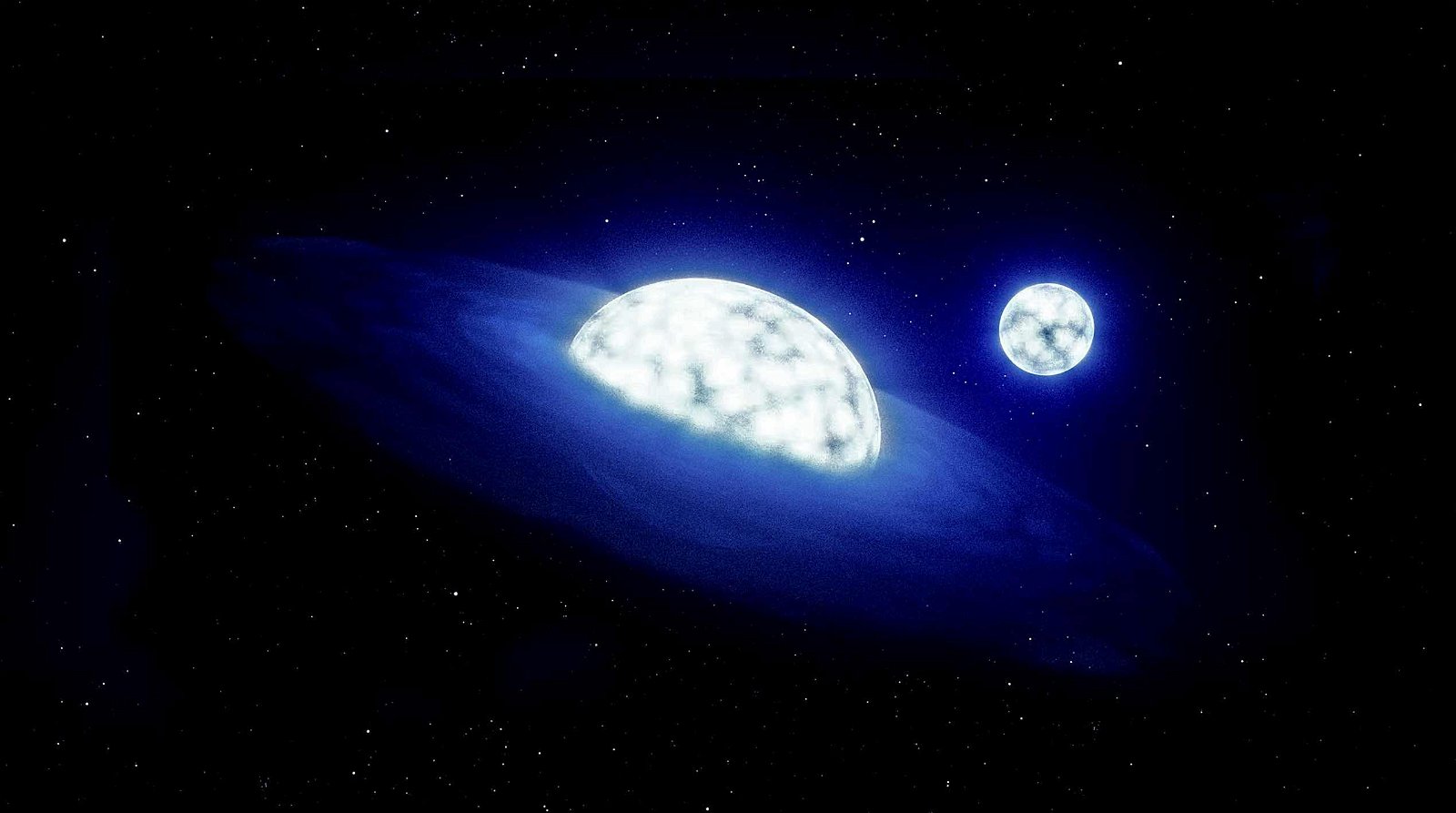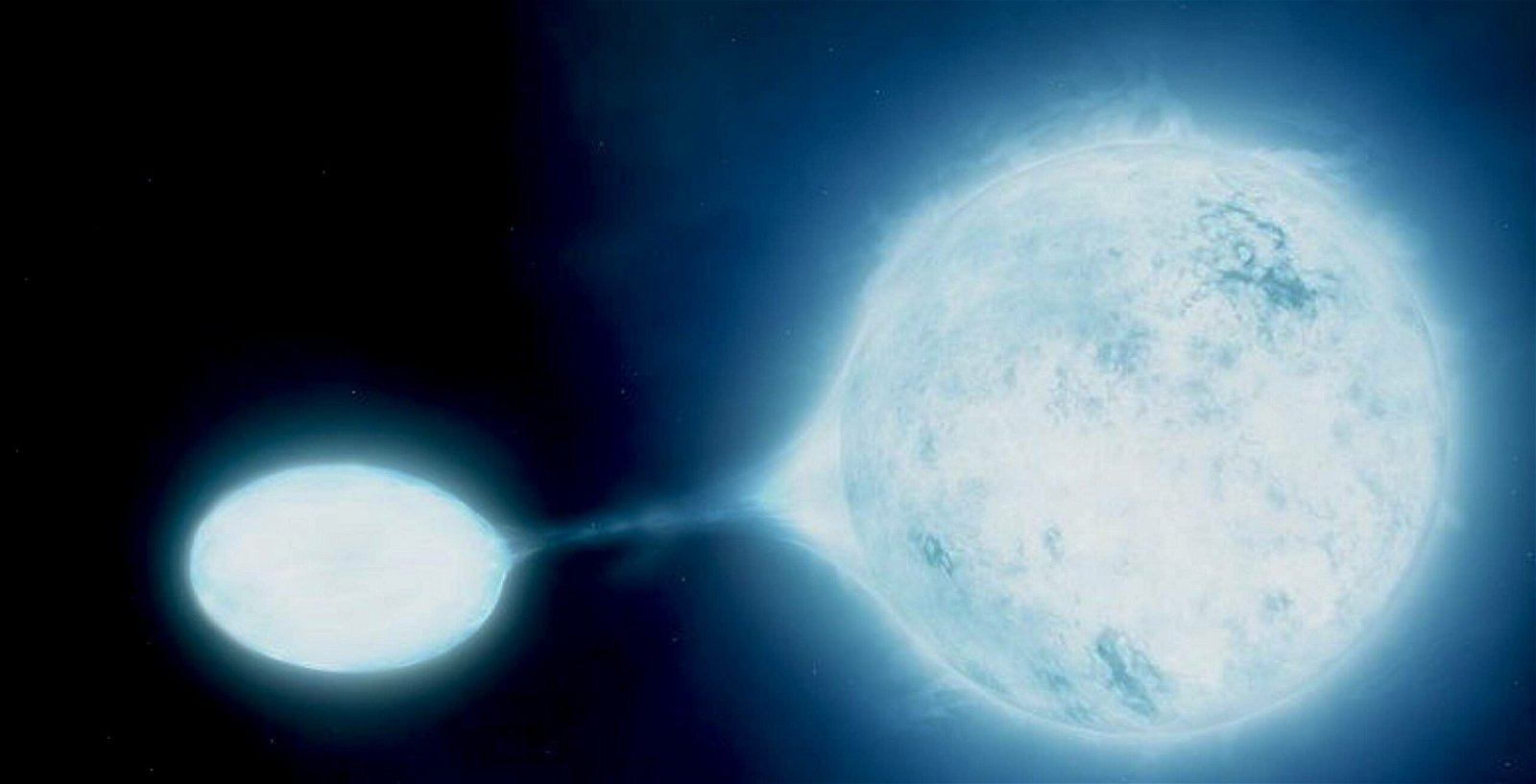Astronomers in the United Kingdom report intriguing new evidence that some of the Universe’s largest and most ubiquitous stars may have been hiding something, according to findings that may transform our understanding of stellar evolution.
The discovery, which involves Be stars, a subset of the hot, blue-white stars known as B stars, reveals that these celestial objects, previously thought to exist only in double stars, may actually occur in triples. Additionally, the new research also reveals observations of unusual “vampire star” activity, findings that could have a significant impact on our understanding of how stars form.
The research, led by Jonathan Dodd, a Ph.D. student at the University of Leeds, as well as Professor René Oudmaijer with the University’s School of Physics and Astronomy, offers strong evidence that could potentially upend our past thinking about Be stars, with even wider implications for our understanding of how stars evolve.
The Mysterious Be Stars
Be stars are a variety of huge, rapidly rotating stars that may fall under one of three spectral types recognized by astronomers. With average temperatures between 10,000 to 30,000 K, Be stars are classified as non-supergiant stars.
Be stars are also known to possess discernible emission lines in the light they produce, a phenomenon caused by glowing hot gas produced by stars that occur only when they are at specific temperatures. Emission lines appear as bright lines or “peaks” in the spectra of such stars where regions of the hot gas cloud emit more light than they absorb. In Be stars, these emission lines are either what astronomers call hydrogen Blamer lines or, in some instances, neutral helium, iron, or other varieties of emission lines.
Be stars are also known to eject hot gas as they rotate, which produces a circumstellar disk that somewhat resembles the rings of Saturn. Some of them, like the Be star Achernar, are also very bright; with a visual magnitude of 0.46, Achernar is the ninth brightest star observable in the night sky and more than 3,100 times brighter than our Sun.
While their existence has been known since 1866, how Be stars form has remained somewhat mysterious, although theories about the formation of their characteristic disks have offered clues about their origins. The disks are believed to be formed primarily by the rapid rotation of Be stars, which may result from interactions with other stars present in a binary system.


Dodd, a corresponding author of a new paper detailing the recent findings, compares this to imagery in science fiction films like Star Wars, where planets like Luke Skywalker’s home, Tatooine, are depicted with two Suns.
However, while examining data collected by the European Space Agency’s Gaia satellite, Dodd, Oudmaijer, and their team say they uncovered a surprise: evidence that Be stars may actually exist in not just double, but triple systems where three bodies interact.
Dodd says the team observed the movement of stars through the night sky over periods as long as a decade, as well as much shorter period lasting just a few months. When stars are observed moving in a straight line, it is a clear indication that there is only one star present. However, when more than one star exists, astronomers will discern either a very slight wobble or, in some cases, even a spiraling movement.
Applying this knowledge to two separate groups of B stars and Be stars, the team was initially confused by their observations.
“[A]t first it looks like the Be stars have a lower rate of companions than the B stars,” Dodd said in a statement. “This is interesting because we’d expect them to have a higher rate.”
“The fact that we do not see them might be because they are now too faint to be detected,” adds Oudmaijer.
Appearance of a ‘Vampire Star’
Turning their attention to different data, the team began looking for companion stars further away. This revealed that when larger separations exist, the rate of companion stars was found to be similar between the different B and Be star groups.
According to Dodd and Oudmaijer, the likely solution is that a third star probably exists. This third star forces the companion close enough to the Be star that mass is transferred from one to the other, resulting in their characteristic disk formation.
The team believes their observations may also be able to account for why the companions aren’t seen anymore under such circumstances since their loss of mass causes them to shrink to the point that they can no longer be detected, having effectively been consumed slowly over time by their accompanying “vampire star.”
The team believes their discovery could have significant implications for astronomy, which may also help expand our understanding of black holes, gravitational waves, neutron stars, and various other cosmic phenomena.
“Over the last decade or so, astronomers have found that binarity is an incredibly important element in stellar evolution,” Professor Oudmaijer said in a statement.
“We are now moving more towards the idea it is even more complex than that and that triple stars need to be considered,” he says, adding that “triples have become the new binaries.”
The team’s research paper, “Gaia uncovers difference in B and Be star binarity at small scales: evidence for mass transfer causing the Be phenomenon,” appeared in the journal Monthly Notices of the Royal Astronomical Society.
Micah Hanks is the Editor-in-Chief and Co-Founder of The Debrief. He can be reached by email at micah@thedebrief.org. Follow his work at micahhanks.com and on Twitter: @MicahHanks.

